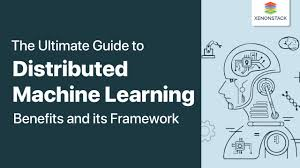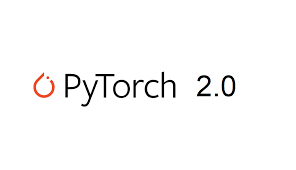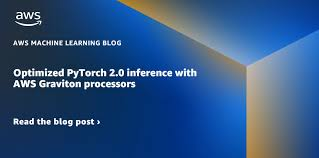
comprehensive guide to Running Distributed ML Models on the Cloud with PyTorch 2.0
In today’s world, large-scale machine learning (ML) models are transforming industries across the board. From Generative AI to Large Language Models (LLMs), the capability to generate human-like responses has revolutionized business processes. However, the growth in model size has also led to a rise in training times and inference costs, creating a need for optimized distributed ML frameworks. This is where cloud-based solutions and PyTorch 2.0 come into play, offering significant performance improvements and cost savings for training and deploying ML models.
In this blog, we explore how to run distributed ML models on the cloud using PyTorch 2.0. We also dive into the technologies and infrastructure tools provided by cloud providers like AWS, which optimize the training process and enhance the overall efficiency of ML workflows.
The Business Need for Distributed ML Models

Many businesses across various industries are adopting AI to stay competitive. Particularly, Generative AI and LLMs are delivering immense value by enabling businesses to automate tasks, enhance customer engagement, and develop more intelligent products.
However, these models come with challenges:
- Model Size: Today’s AI models have hundreds of billions of parameters, which require considerable resources to train.
- Training Time: With large models, training times have expanded from days to weeks, even months.
- Cost: The training and inference costs have surged, demanding more efficient cloud-based infrastructure and ML frameworks.
With these challenges in mind, cloud-based ML services and PyTorch 2.0 optimizations, such as torch.compile, bf16, and fused AdamW, provide an ideal solution to achieve faster training speeds, reduce memory usage, and optimize distributed computing capabilities.
Optimizing ML with PyTorch 2.0

PyTorch 2.0 brings several new technologies that make distributed training and inference more efficient:
- torch.compile: This feature enhances execution speed by optimizing the model compilation process.
- TorchDynamo: Enables just-in-time (JIT) compilation to further optimize execution.
- AOTAutograd and PrimTorch: Advanced tools that improve memory efficiency and computational speed.
- TorchInductor: Accelerates execution using hardware-specific optimization.
These features significantly improve training speeds and distributed computing capabilities, helping teams scale their ML models efficiently.
Running Distributed Models on the Cloud: AWS and PyTorch 2.0

Cloud providers like AWS offer high-performance infrastructure and optimized services to run PyTorch 2.0 at scale. The following tools and services from AWS make distributed ML model training seamless:
- AWS Deep Learning AMIs (DLAMIs): Pre-built machine images for easy deployment of ML models with popular frameworks like PyTorch.
- AWS Deep Learning Containers (DLCs): Pre-configured Docker containers that are ready to use for deep learning workloads.
- Amazon EC2 p4d Instances: Optimized for high-performance computing, providing powerful GPUs (NVIDIA A100 Tensor Cores) for faster training.
- AWS Graviton-based C7g Instances: Cost-effective instances designed for optimized ML inference.
- Amazon SageMaker: A fully managed service that simplifies the deployment of models at scale, from training to real-time inference.
By leveraging AWS’s infrastructure and PyTorch 2.0 optimizations, organizations can achieve up to a 42% speedup in training times and 10% better inference performance.
Key Technologies in Distributed ML with PyTorch 2.0
To implement distributed ML models effectively, several key technologies are utilized:
- Fine-Tuning Large Models: In the case of RoBERTa (a variant of BERT for sentiment analysis), fine-tuning a pre-trained model on cloud infrastructure with PyTorch 2.0 resulted in improved performance metrics and reduced training time.
- GPU Support: Using powerful GPU instances like AWS EC2 p4d with NVIDIA A100 Tensor Core GPUs accelerates the training process, while AWS Graviton-based instances help with cost-effective and efficient inference.
- Speedup via PyTorch Optimizations: Combining torch.compile, bf16 data types, and the fused AdamW optimizer resulted in up to a 42% speedup in training tasks. This combination of optimizations allows models to process data more quickly and with lower memory consumption.
Challenges in Running Distributed ML Models on the Cloud
While cloud platforms offer numerous benefits, enabling frameworks like PyTorch 2.0 on the cloud comes with several challenges:
- Optimizing Libraries: Ensuring that the correct CPU and GPU-specific libraries are in place to accelerate mathematical operations is essential for efficiency.
- Network Optimization: Distributed training requires a network that can handle high throughput and low latency to synchronize updates across nodes.
- Security and Maintenance: Regular patching and upgrading of cloud images and frameworks are necessary to avoid security vulnerabilities and maintain optimal performance.
Cloud service providers like AWS help mitigate these challenges by offering pre-built, optimized images and security patches, enabling organizations to focus on their business needs while reducing operational overhead.
Steps for Running Distributed ML Models on the Cloud
The following steps outline how to fine-tune a RoBERTa model for sentiment analysis and deploy it on the cloud using AWS:
- Launch a GPU-optimized EC2 instance (e.g., p4d.24xlarge with 8 NVIDIA A100 GPUs).
- Install PyTorch 2.0 and dependencies via AWS Deep Learning Containers.
- Clone and modify the training scripts for PyTorch 2.0 to enable optimizations like
torch.compileandbf16. - Run the model training using the pre-configured container, leveraging multiple GPUs to speed up processing.
- Test locally before cloud deployment by running inference on the model.
- Prepare the model for cloud deployment by packaging it into a tarball and uploading it to Amazon S3.
- Deploy the model on Amazon SageMaker for real-time inference using AWS Graviton-based instances.
This process helps organizations optimize both training and inference stages of model development, making it easier and more cost-effective to scale.
Conclusion
Distributed ML training and deployment on the cloud offer powerful solutions to the challenges of modern machine learning workloads. By combining PyTorch 2.0 with AWS infrastructure, organizations can achieve faster training times, cost-effective inference, and optimized performance.
Cloud providers like AWS help mitigate the complexities of distributed ML, offering pre-built, optimized environments that make it easier for businesses to leverage cutting-edge AI models. The ability to fine-tune, deploy, and scale models at speed is now more accessible than ever, thanks to advancements in PyTorch 2.0 and cloud-based infrastructure.
As the need for large-scale machine learning grows, the combination of cloud resources and advanced ML frameworks will be key to meeting the demand for faster, more efficient AI models.